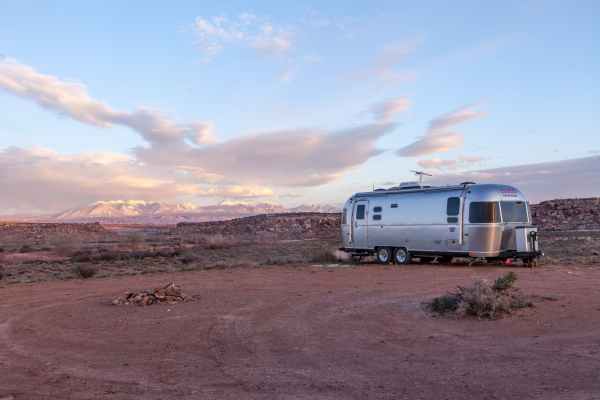May 18, 2019
Tiny Living Culture – Is Van Life For Us? by Emily Barnes

A Volkswagon van modified for living on the go
Source: Tiny Living – Is Van Life for Us? | New York Family Adventures
Emily Barnes of New York Family Adventures has given us a glimpse into tiny living culture with her van life guide for the fifth issue of The Burgundy Zine
I can remember when I could fit all of my belongings into the back of my car. Of course, I was seventeen at the time. Things have really changed since then.
Now I have decades of keepsakes, photo albums, and cumulative collections of things I enjoy. Add in business endeavors, two marriages, two grown children, and a few dogs; and you have a lot of items in your living space. Downsizing to a tiny home was challenging enough, but can I downsize more to enjoy life in a van?
You’re probably curious about why I’m thinking of Van Life.
If you’re just jumping in, I spent six months living in a tiny home last year. You can start at the beginning if you’d like… Tiny Living.
Read: Tiny Living
New York Family Adventures
The Barnes’ tiny home
Source: Tiny Living – Is Van Life for Us? | New York Family Adventures
By the end of my six month experience, I had fallen in love with the concept of tiny living and proposed to begin designing my own version of the perfect tiny home.
I have found in my research that many tiny homes satisfy some, but not all needs. I believe I can design a floor plan that meets the levels for comfort, function, privacy, and size; keeping in mind the parameters for a tiny home.
As my research continued, I became inspired by Van Life. If people could enjoy living in an even tinier space, then I should start even smaller and work my way up.
Most tiny homes are already on wheels because of the housing ordinances in the majority of the country. You can get away with an ADU (Accessory Dwelling Unit, aka mother/daughter) built on your property, but then there still needs to be a larger home on the plot. That doesn’t help someone who wants to put a lone tiny home on their own parcel of land.
Homes on wheels aren’t classified as permanent structures, only recreational vehicles. However, many places have rules about the maximum amount of time these vehicles are permitted to stay parked in any one place.
A home that you would put on wheels (recreational vehicle) is tinier than your average tiny home, but it has a big advantage in that it is mobile. People are enjoying the freedom of mobility with their vans, motor homes, RVs, and even reconditioned school buses.
This notion really appeals to me as a way to travel comfortably while touring the country on my own terms and saving money. The added bonus is being able to take our furry family members along.
A mobile home in the desert
Source: Tiny Living – Is Van Life for Us? | New York Family Adventures
Some of the biggest challenges in customizing a van into a living space are the bathroom, kitchen, external power and headspace.
Van Life Guidelines
External Power
A handy woman
Source: Tiny Living – Is Van Life for Us? | New York Family Adventures
This can easily be addressed with solar panels, extra batteries, and electrical wiring. There are plenty of tutorials on wiring your custom van on YouTube; but hiring an electrician is your safest option – especially since you will be sleeping inside your creation.
Headspace
This is something you should think about before purchasing a van.
Being able to stand upright inside the van will make you more comfortable. The extra height will also create a more visually open space. Many companies offer a high-roof option:
- Ford Transit- 81.5”
- Mercedes Sprinter- 76.4”
- Nissan NV- 76.9”
- Ram ProMaster- 76”
Kitchen
A tiny stovetop
Source: Tiny Living – Is Van Life for Us? | New York Family Adventures
A small-scale kitchen can easily fit into your van build.
There are kits available, or you can customize your build to suit your own needs.
A sink, at least one burner, counter space, and some storage seem to do the trick. A gas stove is the most common for vans, but you can also opt for a more expensive induction stove to offer more counter space.
One area of focus is your water supply. If you want running water for your sink or bathroom, then the next step is a water tank and pump. You can base your plumbing and electrical needs on how involved you want to get. (Don’t forget push-to-close latches for your drawers so they don’t fly open while you’re driving. They’re the same ones you would use on a boat.)
Bathroom
Restroom sign
Source: Tiny Living – Is Van Life for Us? | New York Family Adventures
The bathroom seems to be the biggest area of contention.
In a traditional RV, you would have a bathroom space with a toilet that flushes into a waste tank. The waste tank needs to be emptied every couple of days depending on how many people are using it and the size of your black water tank.
My research into van options range from a similar set up on a smaller scale to a portable toilet, then to an emergency toilet and, finally, a trowel for the outdoors. I originally thought I would definitely want a toilet to make travel easier; but after more research, I’m not so sure anymore. Here’s what my research revealed:
Pros of Having a Van Bathroom
- Accessibility – You can go anytime you want without getting out of the van. This is a plus if you’re in a remote area, it’s cold outside, or you have to wake up in the middle of the night to pee.
- Privacy – If you make space in the van for a bathroom, you don’t need to put your Porta-Potti on the ground outside or trek into the great outdoors to relieve yourself.
- Personal comfort – The accessibility and privacy factors improve personal comfort. I’m also positive squatting in the woods after digging a hole for ten minutes isn’t anyone’s idea of comfortable. Neither is using a public restroom, which can be pretty “rank.”
Cons of Having a Van Bathroom
- Space – You have very little square footage in this living space and if you don’t really need a bathroom, the space is going to be better spent on something else.
- Cleaning – You have to empty the tank or canister – a lot. Many of the Van Life bloggers stated this was the deciding factor for their bathroom choice. They stated that what they had to go through in cleaning the toilet/tank every few days wasn’t worth the convenience.
- Smell – The reports are in – no matter how hard you try, the smell seeps into the van at least a little bit.
Bathroom Consensus
An external shower on the coast
Source: Tiny Living – Is Van Life for Us? | New York Family Adventures
People who choose to live in their van – at least part time (an entire season to six months) – have really made a commitment to a way of life. They truly understand the bare minimum. It’s more than camping, but less than a tiny home. Thus, a bathroom is not a necessity.
If your time spent in the van is more for an occasional road trip, you will most likely be satisfied with a portable toilet for emergencies and an outside shower. Most campgrounds and RV parks offer toilet/shower amenities. You also have access to local businesses: rest areas, gas stations, restaurants, and so on.
Why Choose a Van When There Are Bigger Options?
I must admit that the most motivating pictures in “van life” culture are of reconditioned school buses.
People gut and transform old, dingy school buses into trendy apartment look-a-likes. They have enough space for a bathroom, separate bedroom area, and more.
The pictures on social media fill you with a romantic ideal of what it would be like to live “off the grid” – but is this realistic for everyone?
The interior of a school bus, renovated for tiny living
Source: Tiny Living – Is Van Life for Us? | New York Family Adventures
Perks of Choosing a Van
- A van is smaller, which increases mobility and efficiency.
- Its overall size can navigate tighter streets and fit in standard parking lots.
- Vans can offer drive train options: 4WD, AWD, automatic. This makes driving in different climates, terrains, and adverse weather conditions much easier.
Overview
I love the “idea” of living out of a van and exploring all of the wonders of the United States.
My two kids and I have experienced lengthy road trips in our Subaru and living in a tiny home; so I’m confident that we could travel well together in a van.
This wouldn’t be a great long term decision for us as three grown adults, but we can definitely enjoy weeks at a time traveling to interesting destinations.
I would even venture to say that it would be a great option for a cross country road trip. This is also a viable option for short term travel if you have to depend on a day job.
The Barnes’ family adventures
Source: Tiny Living – Is Van Life for Us? | New York Family Adventures
You can definitely think more long term (seasonal) if you work remotely.
Some of the best van life bloggers are living part time in their van and work remotely. Their experiences having to live in confined quarters for months at a time offer some terrific opinions and advice. You will definitely want to do your research to prep your van for your personal needs.
I would consider this as a solo traveler; especially once my son is off to college and my daughter is at her post-doc position. I would be able to comfortably travel between the two and visit wonderful destinations in between.
When they’re ready for a vacation they can hop in and join me!
For my next post, I will design a floor plan and list amenities that will make my van more comfortable (theoretically). I welcome all suggestions whether you are just a fan of van life or actually living the van lifestyle.
What do you think is essential?
Head on over to New York Family Adventures for even more wonderful tips and tricks for tiny living!
Interested in having content featured in an upcoming blog post or issue of The Burgundy Zine? Head on over to the submissions page!
For all other inquiries, please fulfill a contact form.
This entry was posted in Blog, Advice, Blog, Culture, Blog, Guest Content, Hot Stuff, Blog, How To, 2019, Spring 2019, May 2019, Blog, Outdoors, Blog, Travel and tagged in advice, barnes, blog, bloggers wanted, blogging, burgundy zine, burgundyzine, burgundyzine.com, culture, electricity, emily barnes, guest content, guest feature, guide, hot stuff, how to, how to live in a tiny house, how to live in a van, how to live on the road, living in a school bus, living in a tiny house, living in a van, living on the go, living on the road, may 2019, mobile home, mobile homes, new york, new york family adventures, ny, road life, the burgundy zine, tiny house, tiny house bathroom, tiny house electricity, tiny house kitchen, tiny living, tiny living culture, travel, travel guide, travel tips, traveling, tutorial, van bahtroom, van electricity, van kitchen, van life, van life guide, van living, volkswagon, wordpress.
Guest Content
Guest Content is the user to denote any and all articles submitted to us by fellow writers. More content submitted to us by guest contributors can be found under our "Guest Content" section. If you are interested in submitting content to The Burgundy Zine, please refer to our submissions page.
View more posts from this author














